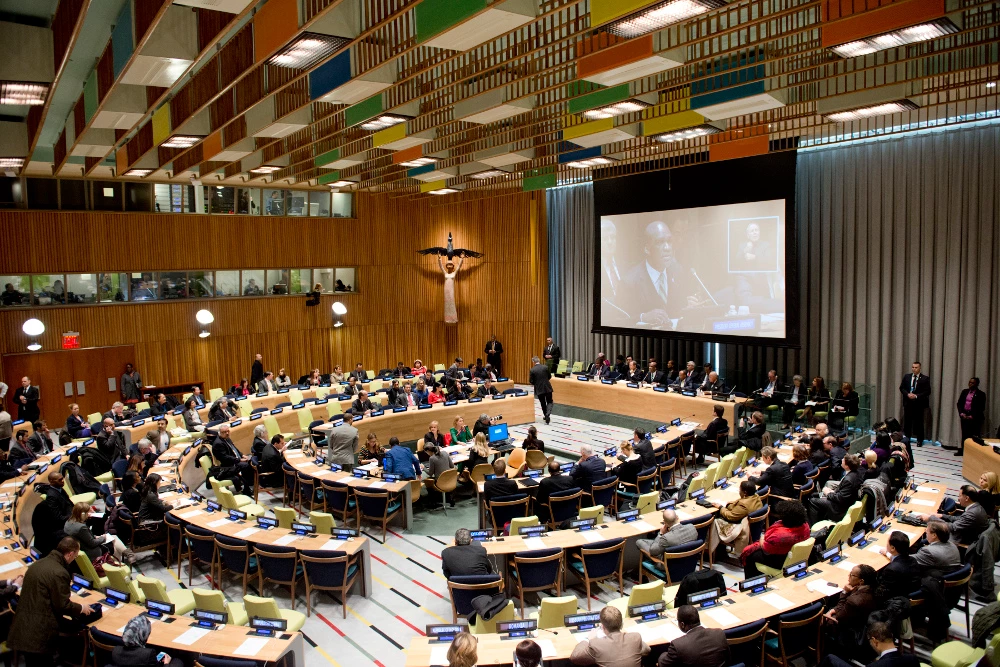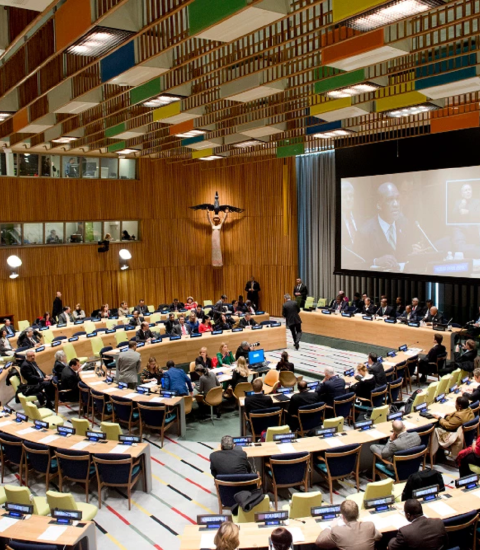Global Climate Change as a Planetary Concern: A Wake-Up Call for the Decision-makers
[By Prof. Bharat H. Desai]
The Setting
The gruelling process of the 27th Conference of Parties (COP27) of the UN Framework Convention on Climate Change (UNFCCC) commenced on 6 November 2022 and came to an end in the early hours of Sunday 20 November 2022. The final outcome of the Sharm el-Sheikh COP emerged after protracted negotiations had spilled over into extended hours following the lapse of the official deadline of 18 November. It came amid calls for ‘payment overdue’ and in the face of sharp divisions, posturing and haggling between different groups of countries, some seeking to further national interests rather than the common cause of addressing the global climate problematique. Even as the stalemate continued and the thousands of assembled delegates trickled out of the conference venue, Antonio Guterres, the feisty UN Secretary-General (UNSG) stepped in on 19 November to renew his call for urgent action and remind the negotiators that:
Climate chaos is a crisis of biblical proportions. The signs are everywhere. Instead of a burning bush, we face a burning planet. This conference has been driven by two overriding themes: justice and ambition. Justice for those on the frontlines who did so little to cause the crisis… ambition to keep the 1.5-degree limit alive and pull humanity back from the climate cliff4.
Even as the UNFCCC completed 30 years (1992-2022) of existence, the annual cycle of COP27 meetings has left nagging questions as regards the evolution of the global climate change regime, the in-built law-making process, and the sincerity of some state parties in their declared willingness to take seriously the growing scientific evidence of the human imprint on climate, as well as the effectiveness of the tools and techniques so far employed to address the challenge of climate change.

Climate Emergency
The ritual of the Sharm El-Sheikh COP was held amid warning signs that, from ‘shifting weather patterns that threaten food production, to rising sea levels that increase the risk of catastrophic flooding, the impacts of climate change are global in scope and unprecedented in scale’. 5 By 2030, the adverse effects of the climatic crisis in this geological epoch of the new Anthropocene6 are expected to push more than 100 million people back into extreme poverty, as well as displacing another 200 million. This portends upheaval on a planetary scale.
Over the years, global climate change negotiations have been marred by much bickering, and COP meetings provide a platform on which to score points for various group of countries guided primarily by their own national interests. It speaks volumes about the tragedy of the sectoral multilateral environmental agreement (MEA)7, which will come nowhere near its ultimate objective of achieving the ‘stabilization of greenhouse gas concentrations in the atmosphere at a level that would prevent dangerous anthropogenic interference with the climate system’ (UNFCCC, Article 2).
The inaugural remarks of the UNSG8 on 2 June 2022 at the Stockholm+50 Conference9 [based on the UNGA enabling (75/280 of 24 May 2021)10 and modalities resolutions (75/326 of 10 September 2021)11 about the climate emergency have brought the planetary-level crisis to the fore:
We face a triple planetary crisis. A climate emergency that is killing and displacing ever more people each year. Ecosystem degradations that are escalating the loss of biodiversity and compromising the well-being of more than 3 billion people. And a growing tide of pollution and waste that is costing some 9 million lives a year. We need to change course – now – and end our senseless and suicidal war against nature.
The UNSG’s warning has vindicated this author’s audacious 1992 scholarly prognosis,12 made at the time of the adoption of the UNFCCC text at the 1992 Rio Earth Summit (UNCED)13 that:
much of the developmental process in the world today does not appear to be sustainable… the human quest to conquer nature through science and technology has brought us to the present brink. The threats to our eco-system essentially emanate from human activities in almost every sector.
Humankind seems now to have acquired the ability to transform the earth’s essential ecological processes. As observed in the preface14 to this author’s 2022 curated ideational work, Envisioning Our Environmental Future,15 we need to ‘ponder on the rapidly depleting time we have left for remedial action to safeguard our future amid warnings of impending environmental catastrophe’. The root cause of many of the present-day ecological upheavals16 lies in planetary-scale environmental disequilibrium.
From Common Concern to Planetary Concern
With 198 Parties, the UNFCCC was designed as a framework convention. It was one of the first treaties to designate climate change as a common concern of humankind. With two subsequent treaties, the 1997 Kyoto Protocol and the 2015 Paris agreement, the regime now comprises three legal instruments with which to address the global climate problematique. The passage of three decades (1992-2022), provides a unique opportunity to look back and to look ahead to the possibilities for attainment of the scientifically desired goal of 1.5 C global warming by 2050. However, the 6th Assessment Report of the IPCC17 drew a grim scenario: ‘Net anthropogenic GHG emissions have increased since 2010 across all major sectors globally… as have cumulative net CO2 emissions since 1850’. The Emission Gap Report of UNEP18, released on 27 October 2022, has now reinforced global concerns that ‘the international community is falling far short of the Paris goals, with no credible pathway to 1.5°C in place. Only an urgent system-wide transformation can avoid climate disaster’.
These scenarios, together with the designation by the UNSG of a ‘triple planetary crisis’,19 have elevated the UNFCCC’s raison d'être of a common concern to a planetary concern. However, the current regulatory approach has been afflicted by the reneging of the developed countries on their commitment to take an effective lead due to their historical responsibility for GHG emissions. The play of narrow national interests came to the fore in the hold-outs and flip-flops of the 2019 withdrawal20 and the 2021 rejoining21 of the 2015 Paris Agreement22 by the United States, the largest emitter by far. This highlights the vulnerability of the treaty process, even as the climate crisis assumes the status of a planetary concern. Now the global regulatory framework appears to be floundering due to (i) the side-tracking of the UNFCCC’s sacrosanct principle of CBDR&RC, (ii) the grounding of the Kyoto Protocol applecart of Annex I legal obligations, and (iii) the legal trick of pushing the developing countries into the NDC trap by means of the 2015 Paris Agreement. Ironically, as has been argued by some veteran negotiators, the developed countries have been ‘backtracking on almost every commitment made by them at the various Conferences of Parties’.23
A Wake-up Call for Decision-makers
Such consistent backtracking by state parties flies in the face of the UNFCCC’s emphatic declarative criterion that ‘the developed-country Parties should take the lead in combating climate change and the adverse effects thereof’ (Article 3 (1)). This is a sine qua non for the UNFCCC’s ‘ultimate objective’ of achieving the stabilisation of greenhouse gas concentrations in the atmosphere (Article 2). This original legal basis requires this criterion, plus a verifying mechanism to ensure that the developed countries ‘take the lead’. Full compliance with these commitments by the developed countries under Article 4 (2) (a) and (b) remains a sine qua non.
In the post COP27 period, and in the absence of a miracle or a trigger event, the words and actions of the leading GHG-emitting developed countries leave little prospect of a decisive course correction. As a result, the developing countries may soon realise the futility of undertaking NDCs without the developed countries in effect carrying out their part of the legal commitments – the cornerstone of the climate change regulatory juggernaut. It enjoins upon the decision-makers of those states party to the UNFCCC (1992), the Kyoto Protocol (1997) and the Paris Agreement (2015), as well as the UN system, the responsibility for taking these international-law mechanisms seriously. The principal global regulatory mechanism needs to be duly galvanised and swiftly moved into the higher levels of climate crisis management, as time seems to be rapidly ‘depleting’24.
The UNGA Needs to Take Charge
Since 1988, the UNGA has been the principal conductor of the grand climate-change orchestra, invoking the normativity of ‘common concern’ (resolution 43/53 of 8 December 1988) which brought into being the UNEP-WMO joint mechanism of IPCC (UNGA resolution 43/53 of 1988, paragraph 5) and triggered the process for negotiations (1990-1992) for the UNFCCC. It is therefore high time for the UNGA to rise to the occasion and elevate that common concern to the higher pedestal of a planetary concern. In view of the gravity of the climate challenge, the UNGA needs to take charge by adopting an appropriate normative resolution during the 77th session and beyond to provide future direction to the UNFCCC and Paris Agreement processes.
Even though COP27 (2022) has adopted the decision on ‘loss and damage’ funding for those vulnerable countries hit hardest by climate disasters, it will take years to flesh out the mechanism and ensure the requisite funding by the perpetrators concerned, and the previous experiences of such climate funding commitments do not augur well. Nevertheless, we must hope against hope for some sanity and for wiser counsel to prevail. As we look ahead, the future trajectory of the climate-change regulatory process remains uncertain. It presents an ideational challenge for scholars of international law, the UN General Assembly and the UNFCCC regulatory process, who must strive earnestly to make it work by elevating the normative ambit of climate-change regulation to that of a planetary concern.25 The forthcoming Summit of the Future,26 to be convened by the UNGA in New York on the 22 and 23 September 2024, could provide a litmus test for that which currently lies in the womb of the future.


